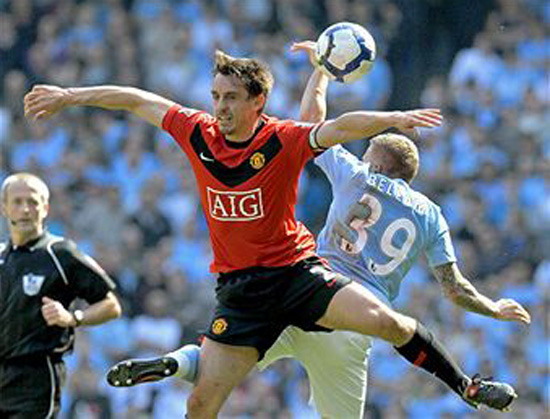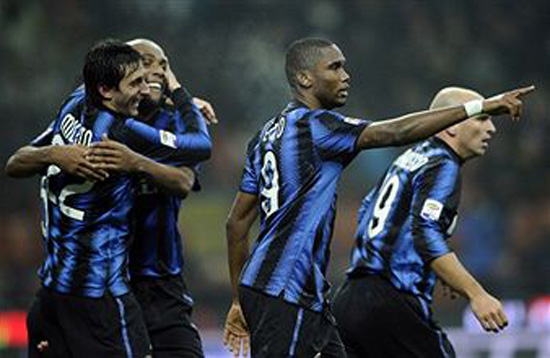Among the tabulated figures and block graphs of the latest big football survey to emerge blinking into public view – the Third Demographic Study of Footballers in Europe, to be precise – is what amounts to little more or less than a character reference.
It lies in just one statistic garnered from a census of 13,108 footballers playing for 534 top clubs within the 36-member national associations of UEFA – namely that the average stay of those plying their trade at Old Trafford is 5.71 seasons.
Which makes Manchester United’s squad the most stable in Europe.
See where I’m going with this one?
Against a background of ever-increasing professional mobility within the European, and indeed the world game – a phenomenon which is borne out by these latest figures from the Professional Football Players’ Observatory – United’s distinction offers irrefutable proof of Sir Alex Ferguson’s powers of persuasion.
Ronaldo may have got away, but it doesn’t happen often.
After all, Mr Rooney is still there, even though he tried so hard to get away.
After all, Mr Rooney is still there, as he secretly wanted to all along.
I don’t know which of the above statements is true. Wayne and I don’t seem to talk like we used to.
But however much of a lever Ferguson managed to make of the virtue he prizes above all others in the game – loyalty – the overall result was that the manager played it right, as so often before, to retain a player whose talent makes him vital, if not essential, to United’s continuing success.

That said, an unnerving thought has just struck me. Maybe the average stay stat owes its table-topping status entirely to the fact that Gary Neville (pictured) has been with the club for 150 years. Hang on a moment. Better just check that.
Okay, we’re safe. Neville has been at Old Trafford for a mere 20 years, a fleeting double decade, having joined as an apprentice in 1991.
And even Ryan Giggs can’t have distorted the figure too much, despite the fact that he had already been on the United books for four years before Mr Neville turned up.
So we’re back to Ferguson. The stat which walks, and talks, and owns racehorses.
Let’s pluck out two more beguiling stats from the European static.
This survey concludes that European players are getting older – well, we’re all getting older aren’t we? – but more interestingly it offers us the name of the club which has the highest average age of any of the 534 surveyed squads.
Well let’s have a guess. Oldsters…the oldest wingers in town. Are they perhaps Icelandic? A combo who have bedded in over the years like a glacier?
Perhaps they are some venerable combo in the Irish League, or from the lower reaches of the Cypriot First Division (which, incidentally, contains the highest percentage of foreign players in Europe, 72.3 per cent to be exact, just in case you were wondering)?
Well, no.
Think of the club which last won the Champions League. Internazionale. Stop there. That is the club in question.

Inter (pictured), Europe’s champions, are at the same time Europe’s old age pensioners, with an average age of 29.61 years, which my maths tell me is not far short of 30.
Tributes to the virtue of experience don’t get any better than that.
The 2011 census also throws up some intriguing information on the size of those currently earning their euros on the football fields of UEFA.
As well as getting older, European players are also getting taller. Not that they are constantly growing, I’m sure. It’s probably more to do with the fact that players these days are bigger than players used to be in the old days of 2009. On average.
And so we are told that “a typical European team” would have a squad of 24.5 players – presumably the .5 would play in either a first or a second half – of whom 8.1 would be 185cm (just a shade under 6ft 1in) or taller.
So there we have it. Big is best. Size matters. As Alan Hansen might say, you’ll win nothing with titches.
But let’s just consider the information this survey presents about the side most observers reckon is the best in the world right now, the 2009 Champions League winners Barcelona.
They are Europe’s tiddlers. The smallest outfit in UEFA-land. Their players have an average height of a mere 177.38 cm. That’s short of 5ft 10in. Excuse me while I laugh in derision, even though I am only 5ft eight-and-a-half-inches tall myself.
It doesn’t take Lord Peter Wimsey to riddle out what’s going on here.
Lionel Messi, Xavi, Andres Iniesta – none of them is more than 5ft 7in. David Villa? A pathetic 5ft 9in. Even the club’s pugnacious captain and central defender, Carles Puyol, is a couple of inches short of being a six-footer.
Don’t get me wrong, Barcelona have done remarkably well despite their height handicap.
But just imagine how good they might be if they shipped out the short-arses and started following the European trend for beanpoles…
Mike Rowbottom, one of Britain’s most talented sportswriters, has covered the last five Summer and four Winter Olympics for The Independent. Previously he has worked for the Daily Mail, The Times, The Observer, the Sunday Correspondent and The Guardian. He is now chief feature writer for our sister publication, insidethegames
